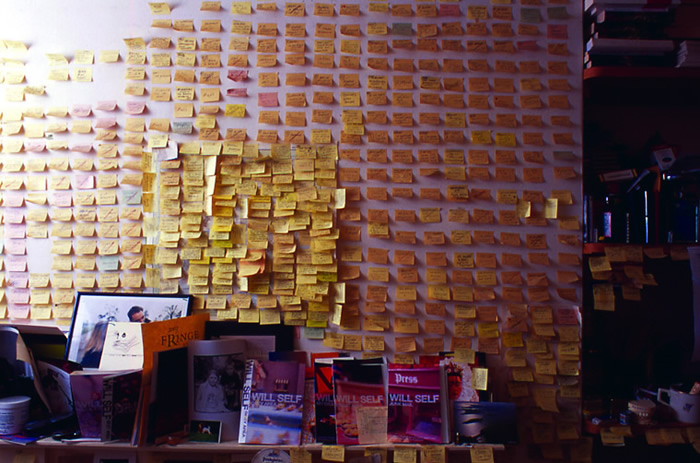Monday morning, May 21. I’m on the Hebridean island of Jura, lost in reveries of farouche glen and pellucid sea, when an email from Ralph drags me back to south-east London: “News of the fire on the Cutty Sark jogged my Sixties’ memory and I dug out a drawing I did of the ship during my student days, when for two or three days a week I attended the London College of Printing and Graphic Arts on Back Hill in Clerkenwell. There were more drawings, but this is the only one that I could find. My art teacher, Leslie Richardson, had saved them all these years and returned them to me about six months ago. All grubby yet surprisingly good…”
Ah, modesty, my collaborator’s besetting shortcoming — but he’s right, of course, the drawing is elegant, while conveying a strong sense of the Cutty Sark’s capacity for speed: it seems to strain against its dry dock, yearning to break through the concrete pack-ice and coast downstream on the ebb tide, heading for the open sea.
I can’t honestly say that the news of many London landmarks being destroyed by fire would affect me so strongly. The Houses of Parliament up in smoke? No big deal — it’s happened before, and the London mob held an impromptu party, standing round and toasting the flames. Buck House? Undoubtedly, also a cause for celebration. Yet the Cutty Sark was different. Many childhood trips to Greenwich seemed consumed by the flames, both my own and those of my children.
Granted, the romance of the sea never exactly gripped me, but the romance of going to Greenwich hasn’t ever palled. It’s enough to take one of the tourist boats down from Westminster Pier, and listen, yet again, to the commentary of one of the pre-Canary Wharf deckhands, rancorously relating the extinction of the London Docks, for me to feel swept away beneath a bellying acreage of canvas.
The Cutty Sark, the National Maritime Museum, Sir Francis Chichester’s Gypsy Moth, the Greenwich Observatory, the very fact of the Greenwich meridian itself — nowhere else in the city could you find such a tight grouping of structures devoted to the notion of travel and human orientation. To be in Greenwich was — and one hopes, still is — to be on the cusp of omnipresence, the event horizon dipping tumultuously beneath one’s own, albeit metaphorical, event horizon.
I walked this way with Iain Sinclair, the mage of Hackney, last summer. We crossed on the Woolwich Ferry and made our way up through the Charlton parks — leaping from green island to island across the reddish-grey waves of London’s urban sea — until we stood by the Observatory, looking across at the lyre-shaped Isle of Dogs. Sinclair, who sort-of believes in lines of psychic energy, pointed out to me the alignment of One Canada Square with Bow Bells and the Meridian — or some such gobbledegook — then averred that all the shit that had gone down in the city since the Reichmanns built the Lego edifice, could be ascribed to this bad feng shui.
I’m not so sure — this maladroit situation certainly can’t explain the torching of the fleetest tea clipper of them all, unless, that is, you think that arson is an opportunistic crime, for which the victim is partly to blame: “She was asking for it, dressed like that in her flimsy rigging … ” Strange, though, when one comes to consider it: these ships, that have travelled so far and with such despatch, ending up marooned in sarf London.
Of course, the Cutty Sark was already a refurbished thing, the earliest example of ship restoration that our nation boasted. Now, let’s hope, it becomes the first example of doubly successful recreation: a restored restoration. Naturally, my first thoughts on hearing of the fire were of my own work. In my latest novel, The Book of Dave, my cab-driving protagonist sights the rigging of the Cutty Sark as he’s snarled up in traffic on the A206 Trafalgar Road. It was one of the few instances of London knowledge that my friend Harry — Hackney cabbing consultant (licensed for up to five writers) — queried, saying: “I’m not sure you’d actually be able to see it from there.” The passage was rightly emended.
But the most flagrant disorientation attending the Cutty Sark conflagration was that of the Emergency Services. Allegedly, when the operator was called, she was unable to despatch a fire engine until given the name of the road the ship was floating on — its own illustrious name was insufficient. Makes you fink, dunnit? I mean, the crew of the Cutty Sark sailed her round the Horn in force 11 gales using only sexton, chronometer and compass, but her position in the heart of the most populous city in Europe could only be established with a battery of computers and an orbiting satellite.
02.06.07
